Stancombe Park: The garden full of hidden tunnels that inspired Evelyn Waugh's Brideshead
Marion Mako uncovers the true story of the labyrinthine tunnels that underpin this magnificent Regency garden, the inspiration for Evelyn Waugh’s description of the garden at Brideshead. Photographs by Britt Willoughby Dyer.


Gardens and especially their hidden buildings have always provided ample possibilities for both real and imagined clandestine liaisons. One such liaison was reputedly conducted at Stancombe Park, a secret Georgian garden ornamented by lakes and classical references. According to local legend, the Revd David Edwards, who lived at Stancombe from 1889, created a series of especially narrow tunnels leading to alcoves and grottos, eventually emerging close to the romantic waterside Doric temple, in which a bed is hidden in an alcove.
All this he allegedly designed for amorous liaisons with his Romany lover: his corpulent wife, the story went, being unable to navigate her way to these lower reaches of the garden, thus leaving his secret safe in the undergrowth. Edwards was certainly a popular figure, but, sadly, the tale has no founding: the bones of this garden had been established long before by the Purnell family, whose association with Stancombe goes back to the 1600s.

Our tale begins with Purnell Bransby Cooper (1791–1866), who was 14 years old when he inherited the Stancombe estate in 1805 from his grandparents (their daughter, his mother, predeceased her father), upon which he promptly changed his name to Purnell Bransby Purnell. Expelled from Eton for disobedience, he had, nevertheless, a keen interest in art, history, antiquities, hunting and sport and would go on to create the Regency garden, complete with a series of tunnels.
By the time he came of age in 1812, his father, Robert Bransby Cooper, had already set about realigning the road running through Stancombe to the north and around the productive farmland, complete with its conigre field, which would eventually form the walled kitchen garden. A year later, Purnell’s marriage to Charlotte Anne Clifford of nearby Frampton Court necessitated a new house.
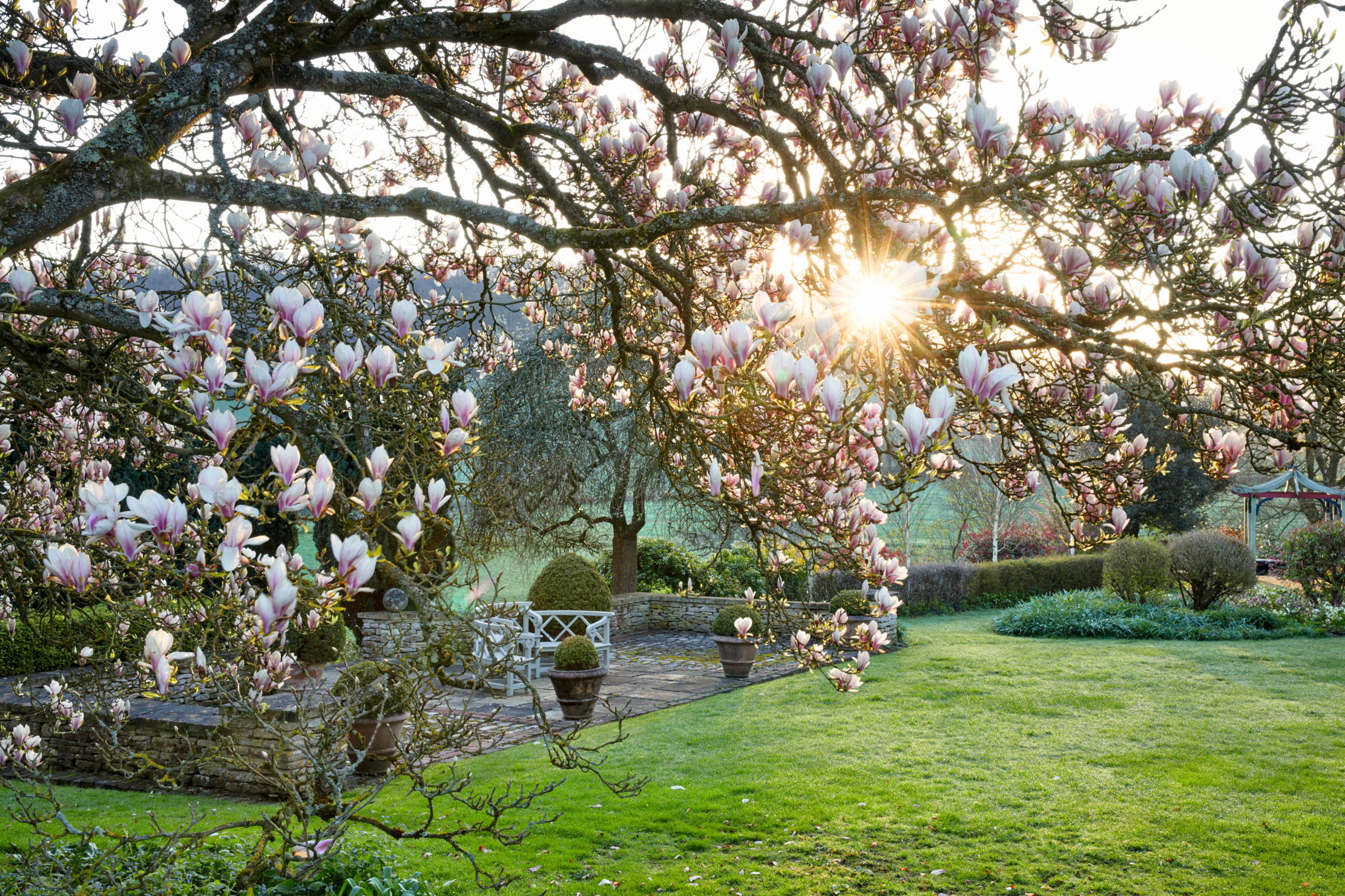
The mellow Bath-stone five-bay box, situated on a south-facing eminence, commands views down the Stancombe Vale that a 1981 article in Country Life declared could not have been improved by Lancelot ‘Capability’ Brown himself. Built in 1815–16, the house has never been linked to an architect and Purnell is thought to have closely supervised the project himself.
By this time, Purnell was a successful and well-respected magistrate, sitting at Gloucester with a particular interest in prison and asylum reform. As his stature and family grew, so did his plans. He enclosed about 50 acres to form a deer park and then created a shrubbery close to the house. The works led to the discovery in 1819 of the remains of a Roman house, with at least six rooms, and a mass of finds, including brooches, beads, rings, glass, pottery and coins, as well as the skeleton of a young woman. Purnell was inspired to open a museum to exhibit the artefacts and educate the locals. In 1847, he would replicate this feat with an even larger Roman find a few hundred yards away.

Spurred on by this success, he threw himself into the next phase of garden making. No lakes are shown on any estate maps before the 1820s, but the 1883 map depicted eight ponds thought to have been dug out by soldiers returning from the Napoleonic wars. But it was the route to these lakes where Purnell exerted his imagination. He created a descent into a tunnelled underworld, guarded by a stone Cerberus and dimly lit by the slim shafts of daylight that pierced the arrow-slit windows. The tunnels survive in good condition and the visitor now, as then, tentatively makes their way down the tenebrous chambers, past a newer shell niche, until they arrive blinking into the daylight beside the lake.
Exquisite houses, the beauty of Nature, and how to get the most from your life, straight to your inbox.
The narrow path continues under rose arbours, offering glimpses through gunnera and palms to the Doric temple on the far bank. The eye is led along the path to an urn, framed by a keyhole doorway, where, in classic fairy-tale tradition, one is offered three different routes. To the right is the Ice House. This is more of a niche, suited to an ornamental hermit, perhaps. Its doorway is surmounted by a whale’s jawbone, reputedly from a stranded migrant on the nearby River Severn. To the left stands a Shinto-style stone doorway leading to a second diversion around a venerable oak and down to a jetty, with views of a copy of the Uffizi boar gazing out over the lake in front of the Doric temple. The third route leads up the bank at the southern end of the lake.
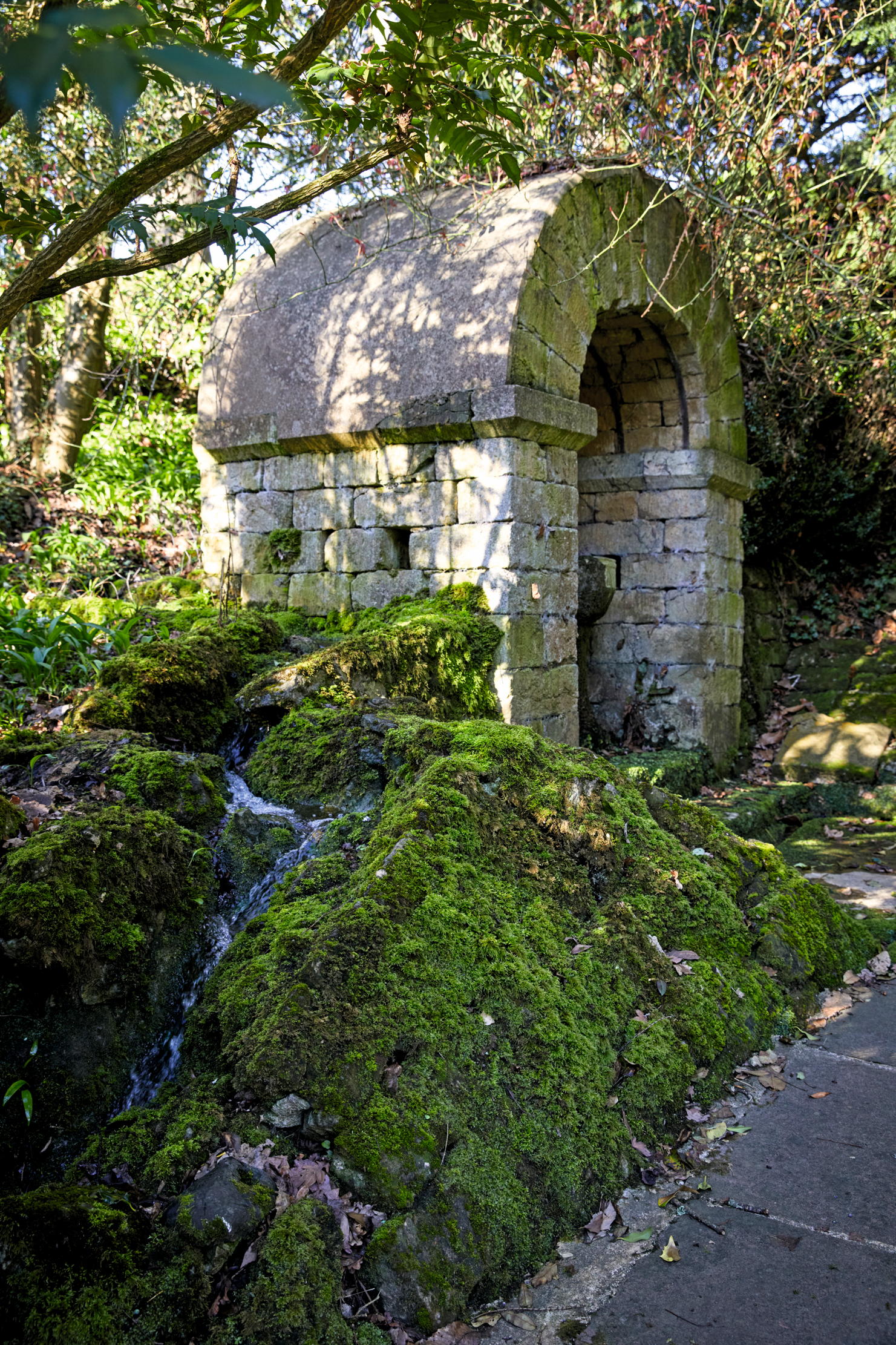
Stancombe was a short stroll from Evelyn Waugh’s home at Piers Court and the author, like Sebastian Flyte, surely rested ‘supine on a sunny seat in the colonnade’ overlooking the fountain, although this one is smaller than the ‘dominating’ Italianate one that Waugh conjured up in Brideshead Revisited. ‘It was a sequestered place, enclosed and embraced in a single, winding valley… [the river] had been dammed here to form three lakes, one no more than a wet slate among the reeds, but the others more spacious, reflecting the clouds and the mighty beeches at their margin. The woods were all of oak and beech, the oak grey and bare, the beech faintly dusted with green by the breaking buds… And lest the eye wander aimlessly a Doric temple stood by the water’s edge.’
Close to the temple are two cottages of warm Cotswold stone. Built in the cottage ornée style and originally housing estate workers, they are suggestive of John Nash’s 1811 Blaise Hamlet in Bristol. Leaving the temple behind, the lakeside path runs under an arbour of Vitis coignetiae to rejoin the labyrinthine network. The upper path leads to a camellia grove, studded with specimens of various shades, including the enormous Camellia japonica ‘Yukimi-guruma’ with its fried egg-like flowers. Hidden beyond are two little cupola-topped huts that likely doubled as changing rooms and as winter protection for the more tender plants. Overhung by a magnificent Clerodendrum trichotomum, their view is of an ornate tiered swan fountain. Perhaps this was the inspiration for Waugh’s fountain, ‘found there a century ago by one of Sebastian’s ancestors; found, purchased, imported, and re-erected in an alien but welcoming climate’.
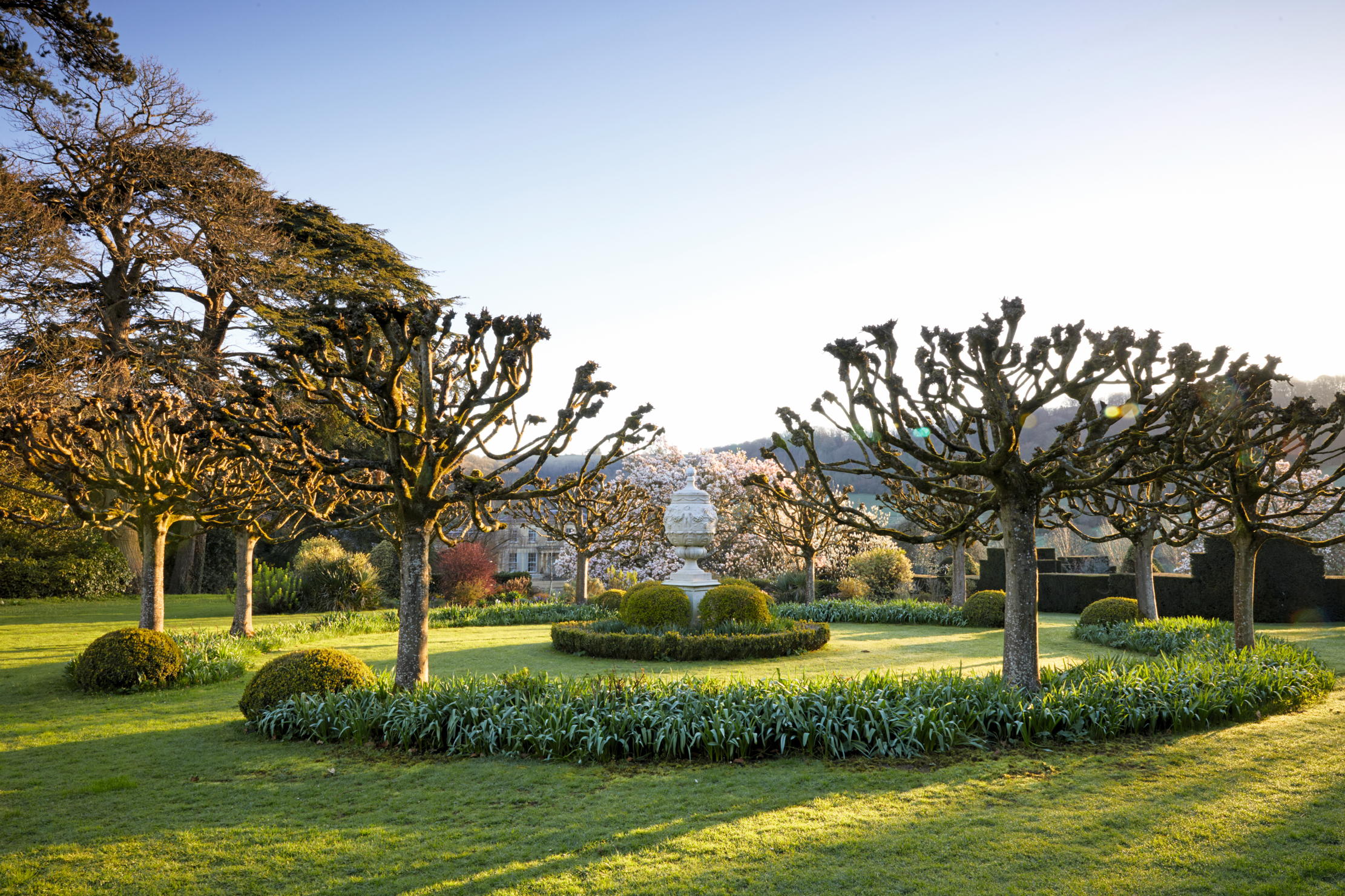
Sadly, we know little of Purnell’s original inspiration, but two surviving records depict this Regency idyll. Various views were recorded in watercolour renditions by William Crouch (fl. 1817–50). A lesser-known artist, possibly because he rarely signed his landscapes, Crouch was nevertheless prolific, portraying the classical Arcadian visions of the English Regency landscape. The second, more intimate record was created by Purnell’s wife, Charlotte Anne, who, together with her sisters, painted watercolours of the wildflowers, which were eventually published as The Frampton Flora in 1985.
Stancombe Park has always been a private garden and has belonged to the Barlow family since 1929. Gerda Barlow, the late grandmother of the present incumbents, opened the gardens to private groups from the 1980s and, if lucky enough, you were treated to her Sacher-Torte, a recipe from her Austrian heritage. The tour began with the Pattern borders, which she had laid out in 1964, enlisting the help of Lanning Roper for a revision in 1981. Set on a plateau aligned with the portico, yew hedging encloses a mixture of symmetrical and asymmetrical planting, with many spring-flowering shrubs. At the end of this avenue, a stag rests under a Catalpa bignonioides tree.
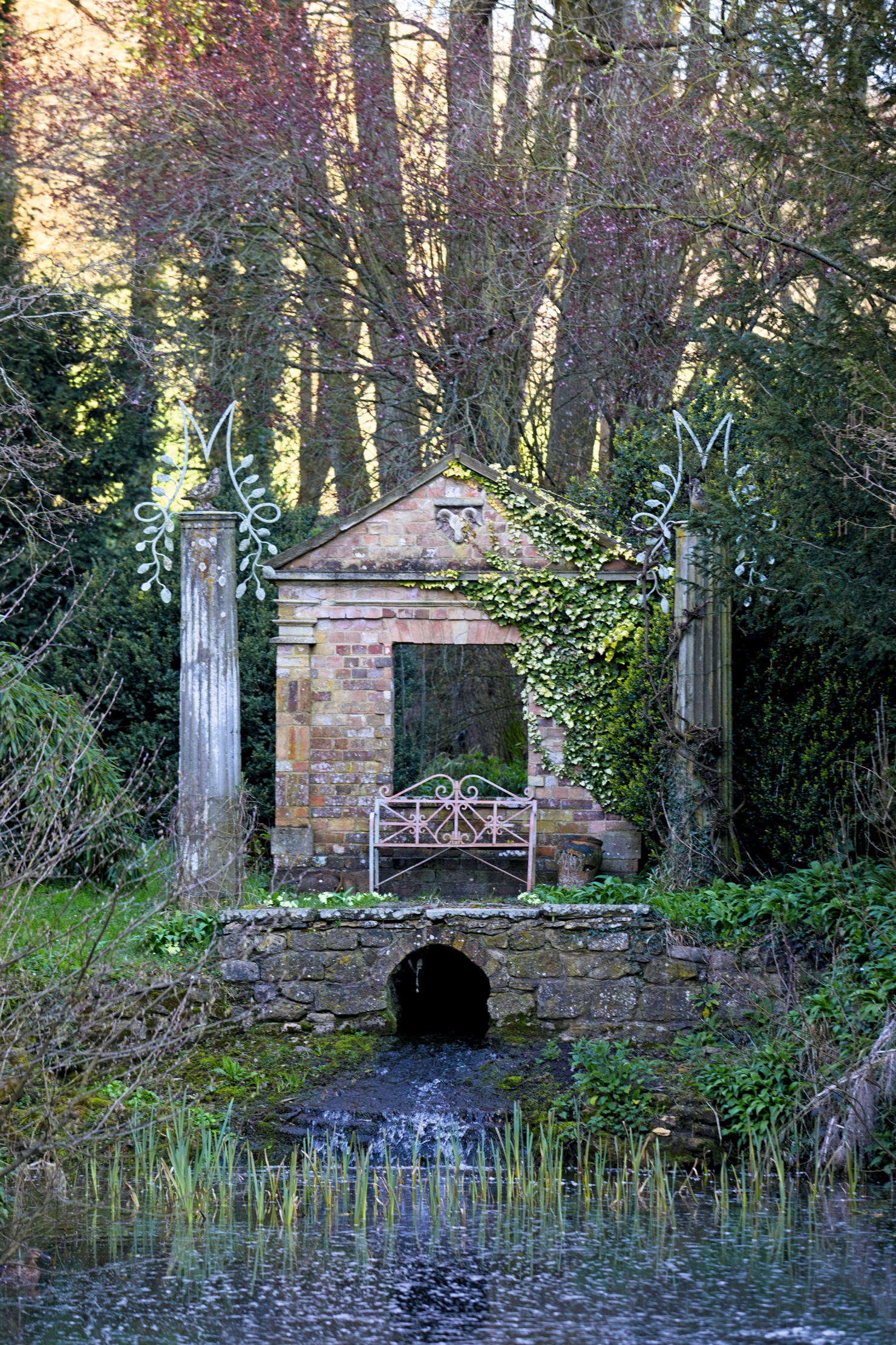
On the western side, a circle of Acer pseudoplatanus ‘Worleii’ surrounds a large stone urn under-planted with box cushions and Rosa glauca. But none of this mannered garden prepares the visitor for the plunging paths and cavernous frissons found in the valley below, all of which can now be enjoyed out of hours, on a holiday in the refurbished estate cottages and Doric temple.
Under the new stewardship of the third generation of the Barlow family, a parkland plan is steadily being implemented. This is reinstating traditional agricultural management, restoring designed views and includes planting trees around the landscape. It may even include replanting a lost perry orchard.
To stay at Stancombe Park, Gloucestershire, visit www.stancombepark.com

Credit: Jacky Parker / Getty
What I grow in my garden, by Country Life's gardens editor Tiffany Daneff

Where to see ferns: Six of the most spectacular places in Britain
Country Life's gardens editor Tiffany Daneff picks out some of the finest ferneries in Britain.
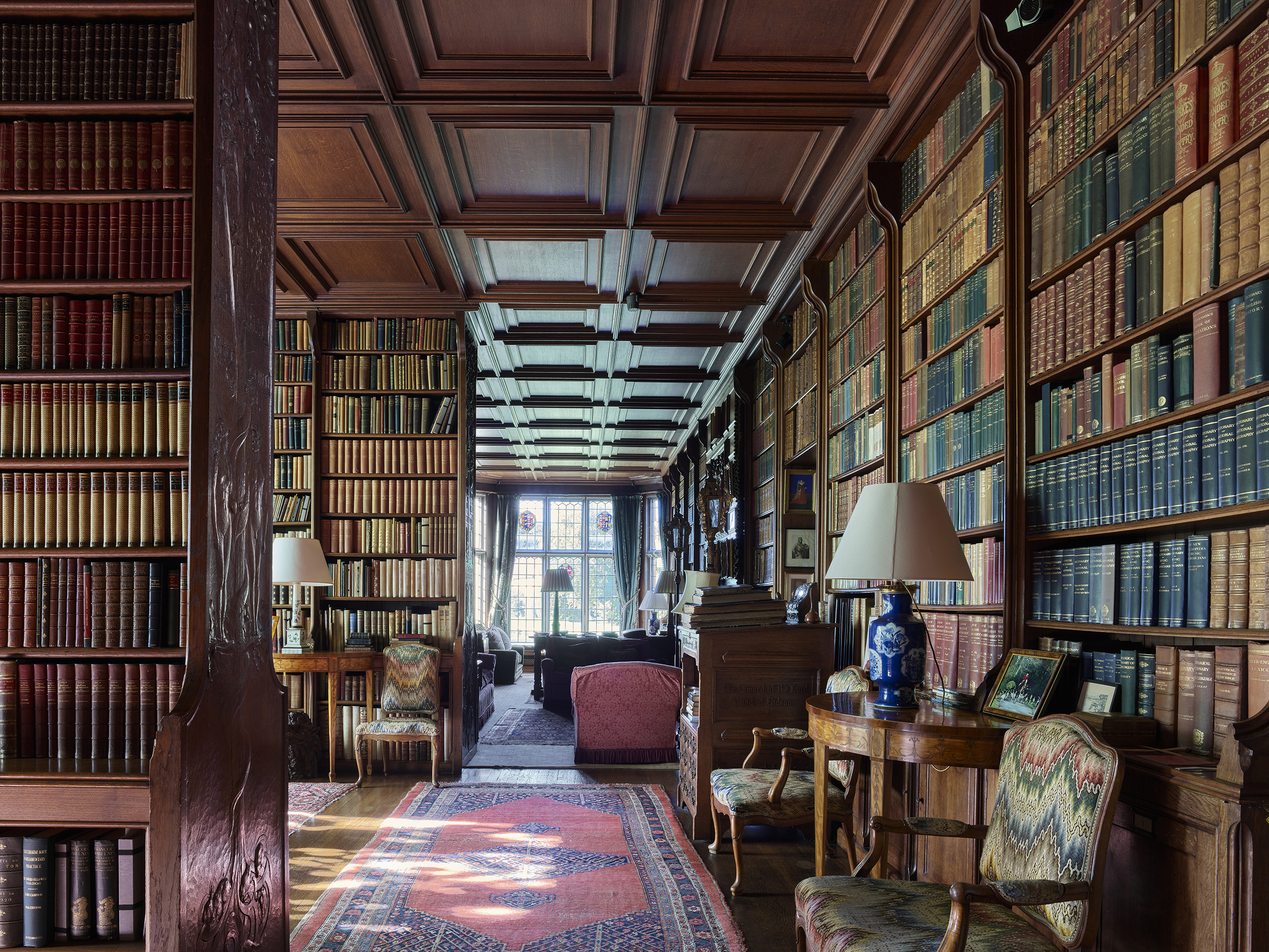
Inside Madresfield Court, the house that inspired Evelyn Waugh’s 'Brideshead Revisited'
John Goodall looks inside Madresfield Court in Worcestershire — home of Lucy and Jonathan Chenevix-Trench — and the family story that
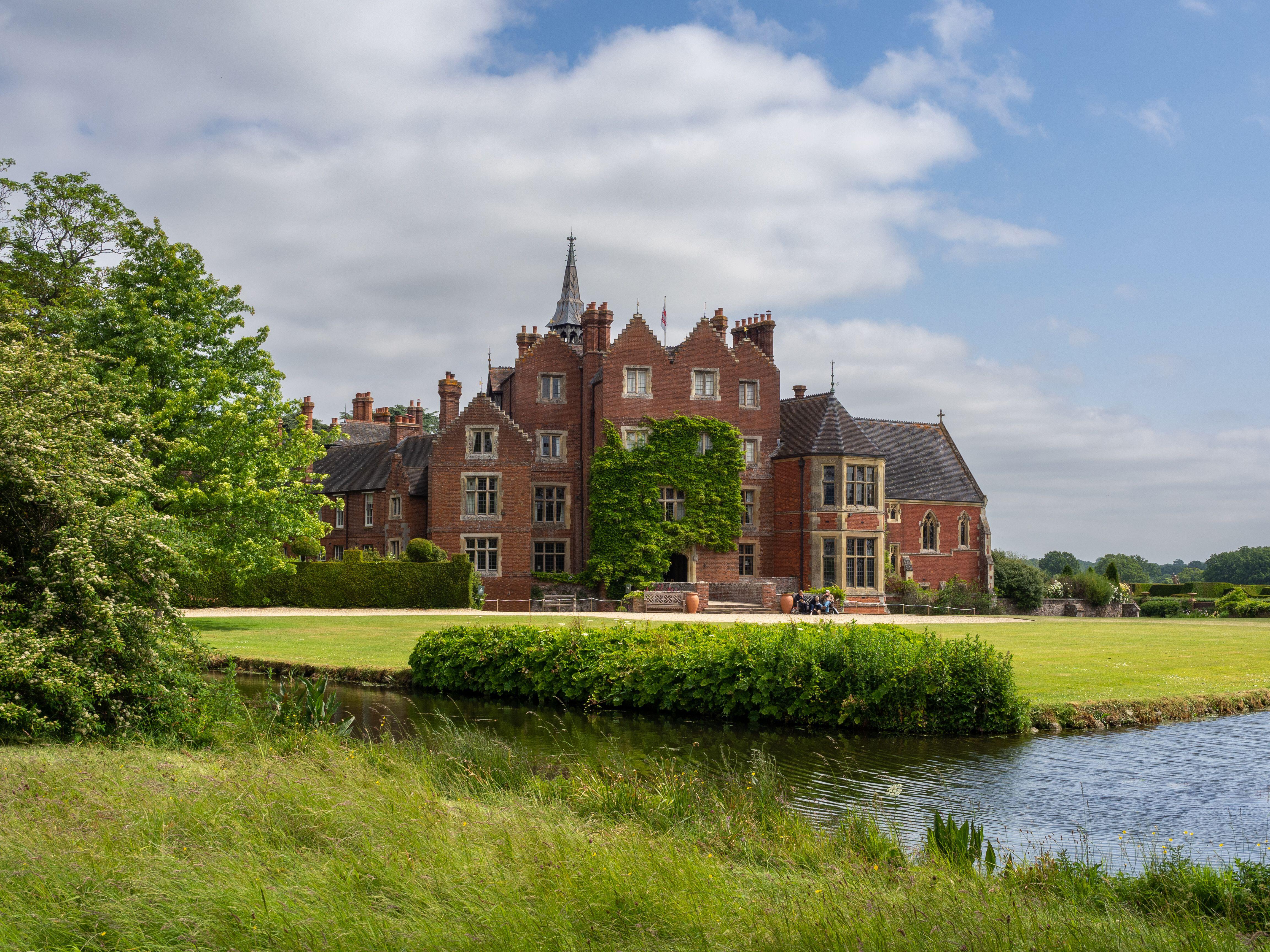
A walk in the footsteps of Evelyn Waugh at Madresfield Court, the real-life inspiration for Brideshead Revisited
Fiona Reynolds takes a walk around the home that captured Evelyn Waugh’s imagination, finding a place that is both intriguing
Country Life is unlike any other magazine: the only glossy weekly on the newsstand and the only magazine that has been guest-edited by His Majesty The King not once, but twice. It is a celebration of modern rural life and all its diverse joys and pleasures — that was first published in Queen Victoria's Diamond Jubilee year. Our eclectic mixture of witty and informative content — from the most up-to-date property news and commentary and a coveted glimpse inside some of the UK's best houses and gardens, to gardening, the arts and interior design, written by experts in their field — still cannot be found in print or online, anywhere else.
